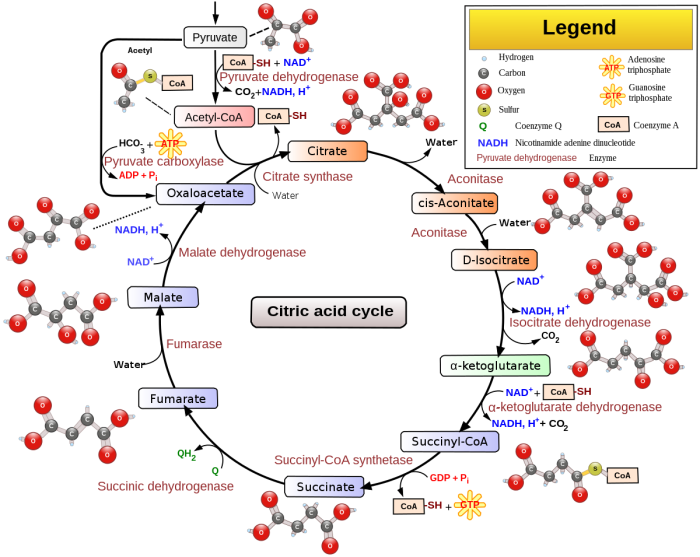POGIL Glycolysis and the Krebs Cycle sets the stage for this enthralling narrative, offering readers a glimpse into a story that is rich in detail and brimming with originality from the outset. This captivating exploration delves into the intricate workings of two fundamental processes that underpin cellular respiration, providing a comprehensive understanding of their significance and far-reaching implications.
Unveiling the intricate steps of glycolysis and the Krebs cycle, this discourse illuminates the mechanisms by which cells harness energy to fuel their diverse activities. Through an in-depth examination of the reactants and products involved, the reader gains a profound appreciation for the elegance and efficiency of these metabolic pathways.
Introduction
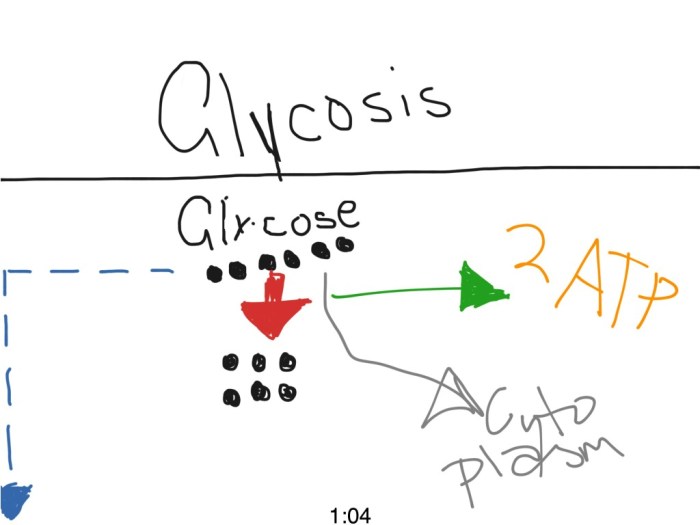
Cellular respiration is the process by which cells generate energy. It is a complex process that occurs in multiple stages, including glycolysis and the Krebs cycle. Glycolysis is the first stage of cellular respiration and occurs in the cytoplasm. It involves the breakdown of glucose, a six-carbon sugar, into two molecules of pyruvate, a three-carbon compound.
The Krebs cycle, also known as the citric acid cycle, is the second stage of cellular respiration and occurs in the mitochondria. It involves the further breakdown of pyruvate into carbon dioxide and water, releasing energy in the form of ATP.
Glycolysis and the Krebs cycle are essential processes for cellular respiration. They provide the energy that cells need to function and survive. Without these processes, cells would not be able to generate the energy they need to carry out their basic functions, such as growth, reproduction, and movement.
Glycolysis
Glycolysis is a ten-step process that can be divided into two phases: the preparatory phase and the payoff phase. The preparatory phase involves the investment of two molecules of ATP to convert glucose into fructose 1,6-bisphosphate. The payoff phase involves the breakdown of fructose 1,6-bisphosphate into two molecules of pyruvate, with the concomitant production of four molecules of ATP and two molecules of NADH.
The Krebs Cycle
The Krebs cycle is an eight-step process that occurs in the mitochondrial matrix. It involves the complete oxidation of pyruvate to carbon dioxide and water, with the concomitant production of ATP, NADH, and FADH2.
- Pyruvate is first converted to acetyl-CoA, which then enters the Krebs cycle.
- Acetyl-CoA is combined with oxaloacetate to form citrate.
- Citrate is isomerized to isocitrate.
- Isocitrate is oxidized to α-ketoglutarate, with the concomitant production of NADH.
- α-Ketoglutarate is oxidized to succinyl-CoA, with the concomitant production of NADH and CO2.
- Succinyl-CoA is converted to succinate, with the concomitant production of ATP.
- Succinate is oxidized to fumarate, with the concomitant production of FADH2.
- Fumarate is hydrated to malate.
- Malate is oxidized to oxaloacetate, with the concomitant production of NADH.
Glycolysis
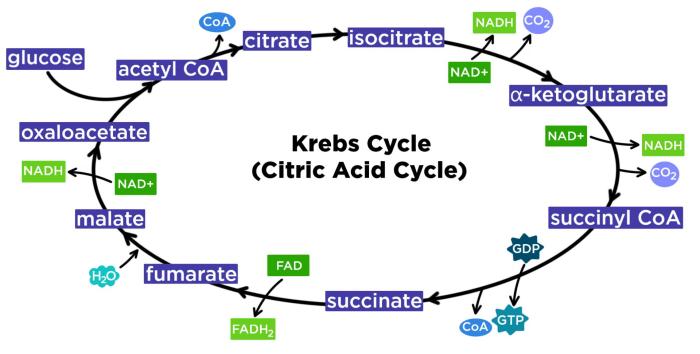
Glycolysis is the first step in cellular respiration, a process that converts glucose into energy. It occurs in the cytoplasm of the cell and does not require oxygen.
Glycolysis can be divided into two phases: the preparatory phase and the payoff phase. The preparatory phase consumes two molecules of ATP and converts glucose into two molecules of glyceraldehyde-3-phosphate (G3P). The payoff phase generates four molecules of ATP, two molecules of NADH, and two molecules of pyruvate.
Steps Involved in Glycolysis
- Glucose is phosphorylated by hexokinase to form glucose-6-phosphate (G6P).
- G6P is isomerized to fructose-6-phosphate (F6P) by phosphoglucomutase.
- F6P is phosphorylated by phosphofructokinase-1 (PFK-1) to form fructose-1,6-bisphosphate (FBP).
- FBP is cleaved into two molecules of G3P by aldolase.
- G3P is oxidized to 1,3-bisphosphoglycerate (1,3-BPG) by glyceraldehyde-3-phosphate dehydrogenase (GAPDH).
- 1,3-BPG is dephosphorylated to 3-phosphoglycerate (3-PG) by phosphoglycerate kinase.
- 3-PG is isomerized to 2-phosphoglycerate (2-PG) by phosphoglycerate mutase.
- 2-PG is dehydrated to phosphoenolpyruvate (PEP) by enolase.
- PEP is dephosphorylated to pyruvate by pyruvate kinase.
How Glycolysis Produces ATP, NADH, and Pyruvate
Glycolysis produces ATP, NADH, and pyruvate through the following reactions:
- ATP production:Two molecules of ATP are produced during the preparatory phase by the phosphorylation of glucose and fructose-6-phosphate.
- NADH production:Two molecules of NADH are produced during the payoff phase by the oxidation of glyceraldehyde-3-phosphate.
- Pyruvate production:Two molecules of pyruvate are produced during the payoff phase by the dephosphorylation of phosphoenolpyruvate.
Table Comparing the Reactants and Products of Glycolysis
| Reactants | Products |
|---|---|
| Glucose | 2 pyruvate |
| 2 ATP | 2 NADH |
| 2 NAD+ | 4 ATP |
The Krebs Cycle
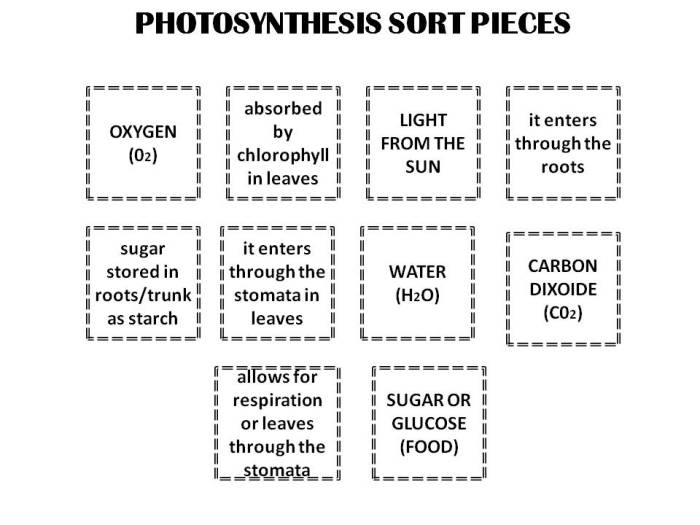
The Krebs cycle, also known as the citric acid cycle or the tricarboxylic acid (TCA) cycle, is a series of chemical reactions that occur in the mitochondria of eukaryotic cells and the cytoplasm of prokaryotic cells. The Krebs cycle is a key part of cellular respiration, the process by which cells convert glucose into energy.
The Krebs cycle begins with the molecule acetyl-CoA, which is produced by the breakdown of glucose during glycolysis. Acetyl-CoA is then combined with oxaloacetate to form citrate, the first molecule in the Krebs cycle. The Krebs cycle then proceeds through a series of nine chemical reactions, each of which is catalyzed by a specific enzyme.
These reactions result in the production of ATP, NADH, FADH2, and CO2.
ATP Production
The Krebs cycle produces ATP through the process of oxidative phosphorylation. Oxidative phosphorylation is the process by which ATP is produced when electrons are transferred from NADH and FADH2 to oxygen. The electrons are passed through a series of protein complexes in the inner mitochondrial membrane, and the energy released by this process is used to pump protons across the membrane.
The protons then flow back across the membrane through ATP synthase, an enzyme that uses the energy of the proton gradient to produce ATP.
NADH and FADH2 Production
The Krebs cycle also produces NADH and FADH2. NADH and FADH2 are electron carriers that are used to transfer electrons to oxygen during oxidative phosphorylation. NADH is produced in three of the nine reactions of the Krebs cycle, and FADH2 is produced in one of the reactions.
CO2 Production
The Krebs cycle also produces CO2. CO2 is a waste product of cellular respiration. CO2 is produced in two of the nine reactions of the Krebs cycle.
Flowchart of the Krebs Cycle, Pogil glycolysis and the krebs cycle
The following flowchart illustrates the flow of molecules through the Krebs cycle.
Acetyl-CoA + Oxaloacetate → Citrate Citrate → Isocitrate Isocitrate → α-Ketoglutarate α-Ketoglutarate → Succinyl-CoA Succinyl-CoA → Succinate Succinate → Fumarate Fumarate → Malate Malate → Oxaloacetate
Regulation of Glycolysis and the Krebs Cycle
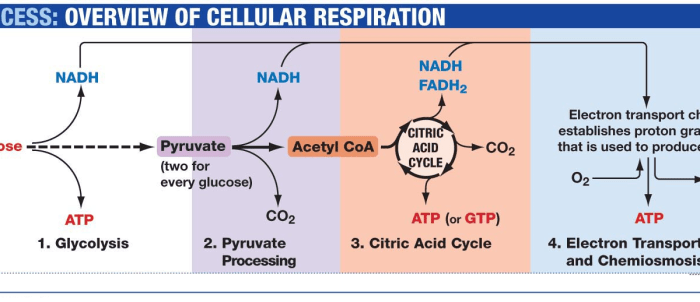
Glycolysis and the Krebs cycle are tightly regulated to ensure the efficient production of ATP and other essential molecules.
Several key enzymes play a crucial role in regulating these pathways, and their activity is influenced by various factors, including the availability of substrates, products, and regulatory molecules.
Key Enzymes Regulating Glycolysis
- Hexokinase: Catalyzes the first step of glycolysis, the phosphorylation of glucose.
- Phosphofructokinase-1 (PFK-1): Controls the committed step of glycolysis, the phosphorylation of fructose-6-phosphate.
- Pyruvate kinase: Catalyzes the final step of glycolysis, the conversion of phosphoenolpyruvate to pyruvate.
Factors Influencing Glycolysis Regulation
The regulation of glycolysis is influenced by:
- Availability of glucose: Low glucose levels stimulate glycolysis, while high glucose levels inhibit it.
- ATP and AMP levels: High ATP levels inhibit glycolysis, while high AMP levels stimulate it.
- Hormonal signals: Insulin promotes glycolysis, while glucagon inhibits it.
Key Enzymes Regulating the Krebs Cycle
- Citrate synthase: Catalyzes the condensation of acetyl-CoA and oxaloacetate to form citrate.
- Isocitrate dehydrogenase: Catalyzes the oxidative decarboxylation of isocitrate to form alpha-ketoglutarate.
- Alpha-ketoglutarate dehydrogenase: Catalyzes the oxidative decarboxylation of alpha-ketoglutarate to form succinyl-CoA.
Factors Influencing Krebs Cycle Regulation
The regulation of the Krebs cycle is influenced by:
- Availability of substrates: The availability of acetyl-CoA, NAD+, and FAD+ stimulates the Krebs cycle, while high levels of products (e.g., NADH, FADH2) inhibit it.
- ATP and ADP levels: High ATP levels inhibit the Krebs cycle, while high ADP levels stimulate it.
- Hormonal signals: Thyroid hormones promote the Krebs cycle, while glucocorticoids inhibit it.
Feedback Inhibition in Glycolysis and the Krebs Cycle
Feedback inhibition is a regulatory mechanism where the end product of a pathway inhibits an enzyme earlier in the pathway. In glycolysis, the end product pyruvate inhibits pyruvate kinase. In the Krebs cycle, the end product citrate inhibits citrate synthase.
Feedback inhibition helps maintain the balance between the production and utilization of energy, preventing overproduction and waste.
Applications of Glycolysis and the Krebs Cycle: Pogil Glycolysis And The Krebs Cycle
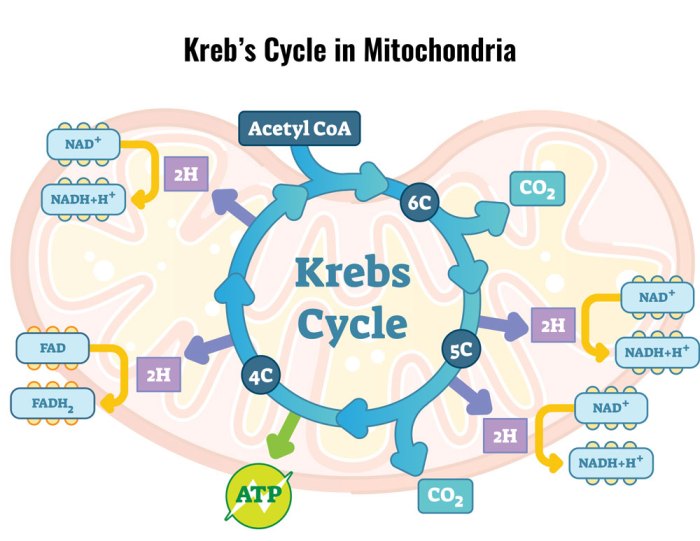
The knowledge of glycolysis and the Krebs cycle has far-reaching applications in biotechnology and medicine. These pathways play crucial roles in cellular metabolism and energy production, making them potential targets for therapeutic interventions and industrial processes.
Biotechnology Applications
- Biofuel Production:Glycolysis and the Krebs cycle are harnessed in the production of biofuels, such as ethanol and biodiesel, from renewable biomass sources like sugarcane and corn.
- Bioplastics:The intermediates of glycolysis and the Krebs cycle can be used as building blocks for the synthesis of biodegradable bioplastics, offering a sustainable alternative to traditional petroleum-based plastics.
- Pharmaceutical Industry:Understanding glycolysis and the Krebs cycle aids in the development of drugs targeting metabolic disorders, cancer, and neurodegenerative diseases.
Medical Applications
Studying glycolysis and the Krebs cycle helps unravel the pathogenesis of various diseases:
- Cancer:Cancer cells exhibit altered metabolism, often relying heavily on glycolysis for energy production. Targeting glycolysis or the Krebs cycle can inhibit tumor growth and proliferation.
- Diabetes:Type 2 diabetes involves impaired glucose metabolism, which can be linked to dysregulation of glycolysis and the Krebs cycle.
- Neurodegenerative Diseases:Mitochondrial dysfunction, including defects in glycolysis and the Krebs cycle, has been implicated in the development of neurodegenerative diseases such as Alzheimer’s and Parkinson’s.
Potential Research Directions
- Metabolic Engineering:Exploring ways to optimize glycolysis and the Krebs cycle for enhanced biofuel production and the development of novel biomaterials.
- Drug Discovery:Targeting glycolysis and the Krebs cycle to develop new therapies for metabolic diseases, cancer, and neurodegenerative disorders.
- Systems Biology:Integrating knowledge of glycolysis and the Krebs cycle with other cellular processes to gain a comprehensive understanding of metabolism and its role in health and disease.
Commonly Asked Questions
What is the significance of glycolysis and the Krebs cycle in cellular respiration?
Glycolysis and the Krebs cycle are fundamental processes in cellular respiration, responsible for extracting energy from glucose to produce ATP, the primary energy currency of cells.
How does glycolysis contribute to ATP production?
Glycolysis yields a net gain of 2 ATP molecules per glucose molecule through substrate-level phosphorylation.
What is the role of NADH and FADH2 in the Krebs cycle?
NADH and FADH2 are electron carriers that transfer electrons to the electron transport chain, ultimately contributing to ATP production through oxidative phosphorylation.
